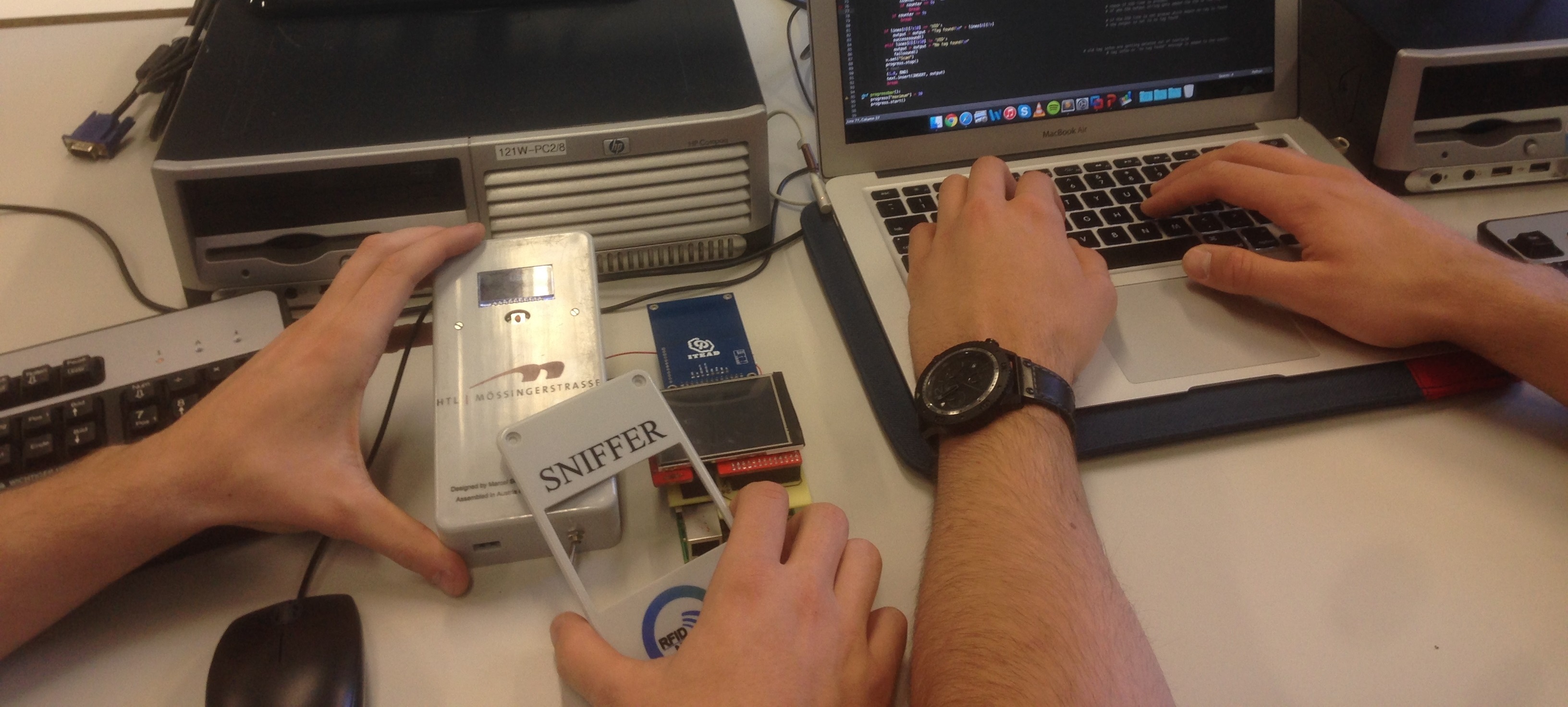
RFID & NFC Sniffer

Detector Bracelet

Prototyping

Many products have implanted RFID or NFC-tags. They are used for stocktaking, process automation, security checks and so on. With this technology it is also possible to observe persons and to see where they are, what they do and what they buy.
Our goal is it to develop handy gadgets for detecting tags and installed readers.
Nowadays many products contain RFID or NFC tags for process automation. They are so small that nobody can clearly say if there are chips implanted or not. That is why we want to develop a device, which makes it possible for everybody to check products, if they contain tags of any sort. Furthermore we also want to detect the RFID and NFC scanners, which are positioned in every shop and also in other places.
NFC or RFID tags can be detected and read by many different devices such as mobile phones, microcontroller development boards with certain communication shields and also microprocessors with shields.
We decided to use the Raspberry Pi because it is a good way to combine a color touch display with an RFID or NFC communication shield while still being small and handy at the same time.
For the realization we used Raspberry Pi model B, a 2.8“ TFT color touch display, 16gb class 10 SD-card, a USB WLAN dongle from Netgear (g54/N150), a self-created adapter board, a power bank and the NFC breakout board from Adafruit.
We had to use the NFC breakout board because the display needs the UART (universal asynchronous receiver transmitter) pins where the most NFC or RFID boards are connected to, so the breakout board is an easy way to connect two peripherals with the Raspberry pi over the GPIO (general purpose in/output) pins.
For the realization of this product we had to make a working schedule and do a lot of research about RFID and NFC. After that we were able to choose the right products matching our needs for creating our prototype.
After testing and improving our prototype we build the final product.